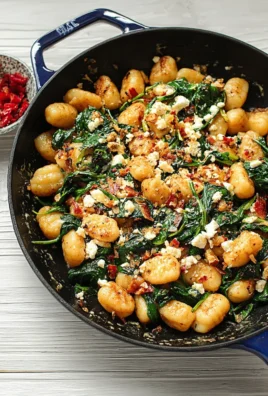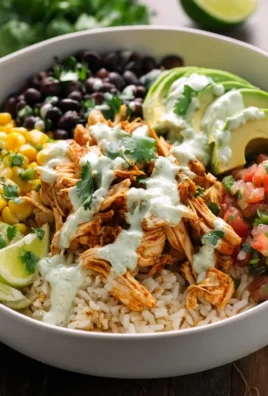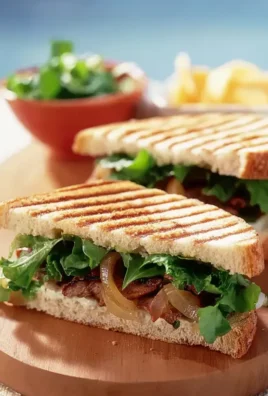
Chicken Marsala is a classic Italian-American dish that has earned its place as a favorite in restaurants and home kitchens alike. This savory, elegant meal features tender chicken cutlets cooked in a rich Marsala wine sauce, often accompanied by earthy mushrooms and enhanced with aromatic herbs. The dish’s luxurious flavors and sophisticated presentation make it ideal for both casual weeknight dinners and special occasions.
One of the key attributes of Chicken Marsala is its balance of flavors. The slightly sweet and nutty notes of Marsala wine perfectly complement the savory richness of the chicken and the umami depth of the mushrooms. Despite its gourmet appeal, Chicken Marsala is surprisingly simple to prepare, making it an accessible choice for cooks of all skill levels.
Historical Background
The Origins of Marsala Wine
Chicken Marsala takes its name from Marsala wine, a fortified wine originating from the town of Marsala in Sicily. Introduced by British merchants in the late 18th century, Marsala wine quickly gained international recognition for its unique flavor, characterized by its caramel-like sweetness and nutty undertones.
Sicilian winemakers developed Marsala as a way to preserve their wine during long sea voyages. By fortifying it with brandy, they created a product that was both stable and highly sought after. Over time, Marsala wine became a staple ingredient in Sicilian cooking, used to enhance both sweet and savory dishes.
French Culinary Influence
The development of Chicken Marsala was influenced by French culinary techniques brought to Italy during the 19th century. The combination of sautéing meat, deglazing the pan with wine, and creating a sauce became a hallmark of this dish. These techniques merged with Sicilian ingredients like Marsala wine and fresh mushrooms, resulting in the recipe we know today.
The Italian-American Evolution
Chicken Marsala gained widespread popularity in the United States as Italian immigrants brought their culinary traditions to American kitchens. The dish was embraced for its versatility and ease of preparation, quickly becoming a favorite on Italian-American restaurant menus. Over time, variations of Chicken Marsala emerged, incorporating cream, butter, and other regional adaptations to suit American palates.
Cultural Significance
Chicken Marsala has transcended its roots to become a symbol of Italian-American cuisine. Its presence in both high-end restaurants and home kitchens speaks to its versatility and universal appeal.
A Staple of Italian-American Dining
- In Italian-American households, Chicken Marsala is often served as a centerpiece for family gatherings, celebrations, and Sunday dinners. Its rich flavors and comforting textures make it a dish that brings people together.
A Favorite in Restaurants
- Chicken Marsala’s popularity in restaurants is attributed to its elegant presentation and ability to impress diners without requiring extensive preparation time. The dish is frequently featured in fine dining establishments, casual trattorias, and even on catering menus.
Inspiration for Creativity
- Over the years, Chicken Marsala has inspired countless variations and adaptations. From creamy versions to vegetarian alternatives, the dish continues to evolve, reflecting the creativity and innovation of home cooks and professional chefs alike.
The Role of Marsala Wine
Marsala wine is the cornerstone of Chicken Marsala, defining the dish’s flavor profile and elevating its overall appeal.
Types of Marsala Wine
- Dry Marsala: Often used in savory dishes like Chicken Marsala, dry Marsala adds complexity without overpowering the dish’s other flavors.
- Sweet Marsala: While primarily used in desserts, sweet Marsala can be incorporated into the dish for a slightly sweeter sauce.
Flavor Profile
Marsala wine is characterized by its notes of caramel, dried fruits, and nuts. These flavors create a rich, nuanced sauce that pairs beautifully with chicken and mushrooms.
Cooking with Marsala
- When selecting Marsala wine for cooking, opt for a high-quality product to ensure the best flavor. Avoid Marsala labeled as “cooking wine,” which often contains added salt and preservatives.
Why Chicken Marsala is a Timeless Dish
Ease of Preparation
Despite its elegant appearance, Chicken Marsala is a relatively straightforward dish to prepare. The cooking process involves a series of simple techniques—sautéing, deglazing, and simmering—that result in a flavorful and satisfying meal.
Versatility
Chicken Marsala is highly adaptable, allowing for the addition of cream, herbs, or other ingredients to suit personal tastes. It can also be served with a variety of sides, from pasta and rice to roasted vegetables, making it a versatile option for different occasions.
Universal Appeal
The dish’s combination of tender chicken, savory mushrooms, and rich wine sauce appeals to a wide range of palates. Whether enjoyed in a traditional Italian-American setting or as a modern reinterpretation, Chicken Marsala remains a crowd-pleaser.
Ingredients and Preparation Techniques
Chicken Marsala is a dish that exemplifies the beauty of simple, high-quality ingredients brought together with care and precision. Achieving the rich, savory flavors and velvety texture that define this dish requires attention to detail at every step. This section delves into the essential ingredients, preparation techniques, and tips to ensure your Chicken Marsala is as delicious as it is elegant.
Essential Ingredients
Chicken Breasts
- Why Chicken Breasts?
Chicken breasts are the most common cut used for Chicken Marsala due to their lean, tender texture. When properly prepared, they absorb the flavors of the sauce beautifully. - Preparation Tips
- Butterfly or Slice Thinly: Thick chicken breasts should be butterflied or sliced horizontally into thinner cutlets. This ensures even cooking and allows the meat to cook quickly without drying out.
- Pound for Uniform Thickness: Place the chicken between sheets of plastic wrap or parchment paper and pound gently with a meat mallet. Aim for a uniform thickness of about 1/4 inch to ensure even cooking.
Marsala Wine
- Choosing the Right Type
- Dry Marsala: Preferred for Chicken Marsala, as it adds depth and balances the savory elements of the dish.
- Sweet Marsala: While not traditional, sweet Marsala can be used if a richer, sweeter sauce is desired.
- Pro Tip: Avoid using low-quality “cooking wine.” Opt for a good-quality Marsala wine intended for drinking, as this greatly impacts the flavor of the sauce.
Mushrooms
- Common Varieties
- Cremini Mushrooms: Also known as baby bella mushrooms, these have a robust, earthy flavor.
- White Button Mushrooms: A milder, more delicate option.
- Portobello Mushrooms: For a deeper, meatier flavor, use sliced portobellos.
- Preparation Tips
- Clean mushrooms gently with a damp paper towel to remove dirt without soaking them.
- Slice mushrooms evenly to ensure consistent cooking.
Aromatics and Herbs
- Shallots: Add a subtle sweetness and depth to the sauce.
- Garlic: Provides a warm, savory base flavor. Use freshly minced garlic for the best results.
- Fresh Herbs: Parsley is a classic garnish for Chicken Marsala. Thyme or rosemary can also be used for added complexity.
Other Key Ingredients
- Chicken Broth: Enhances the sauce’s flavor and provides a base for the Marsala wine.
- Butter and Olive Oil: Create a rich, flavorful base for cooking the chicken and mushrooms.
- Flour: Used for dredging the chicken, flour helps create a light crust and slightly thickens the sauce.
- Heavy Cream (Optional): Adds a touch of richness for a creamy variation of the sauce.
Step-by-Step Preparation Techniques
Preparing the Chicken
- Trim and Pound
- Trim any excess fat or connective tissue from the chicken breasts. Butterfly and pound to an even thickness.
- Season and Dredge
- Season the chicken generously with salt and pepper. Lightly dredge in all-purpose flour, shaking off any excess. This step creates a golden crust when the chicken is sautéed and helps thicken the sauce later.
Sautéing the Chicken
- Heat a large skillet over medium heat and add a combination of olive oil and butter. The olive oil prevents the butter from burning, while the butter adds flavor.
- Place the chicken cutlets in the skillet, ensuring they’re not overcrowded. Cook for 3–4 minutes per side, or until golden brown. Remove from the skillet and set aside.
Cooking the Mushrooms and Aromatics
- Add more butter or olive oil to the skillet if needed.
- Sauté the mushrooms over medium-high heat until they release their moisture and become golden brown, about 5–7 minutes.
- Stir in shallots and garlic, cooking for an additional 1–2 minutes until fragrant.
Deglazing with Marsala Wine
- Pour Marsala wine into the skillet, using a wooden spoon to scrape up any browned bits from the bottom of the pan. These bits, known as “fond,” are packed with flavor and will enrich the sauce.
- Simmer the wine for 2–3 minutes, allowing the alcohol to cook off and the flavors to concentrate.
Creating the Sauce
- Add chicken broth to the skillet, bringing the mixture to a gentle simmer.
- Return the chicken cutlets to the pan, spooning the sauce over them to ensure even coating.
- If desired, stir in a splash of heavy cream to create a creamy Marsala sauce.
- Simmer for 5–7 minutes, allowing the sauce to thicken slightly and the chicken to heat through.
Finishing Touches
- Stir in a pat of butter at the end of cooking to give the sauce a glossy finish.
- Garnish with freshly chopped parsley before serving.
Advanced Cooking Tips for Perfect Chicken Marsala
Use High Heat for Browning
- Ensure the skillet is hot before adding the chicken to achieve a golden crust without overcooking the meat.
Balance the Sauce
- Taste the sauce before serving and adjust the seasoning as needed. If the sauce is too sweet, add a squeeze of lemon juice to brighten the flavors.
Layer the Flavors
- Add a small splash of balsamic vinegar or a teaspoon of Dijon mustard to the sauce for added depth.
Prevent Overcooking
- Remove the chicken from the skillet as soon as it’s cooked through. Overcooked chicken can become dry and tough.
Keep the Sauce Silky
- If adding cream, do so off the heat to prevent it from curdling.




Leave a Comment